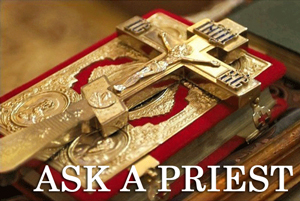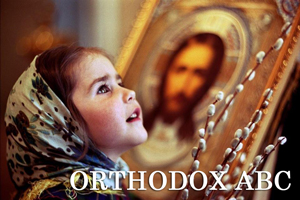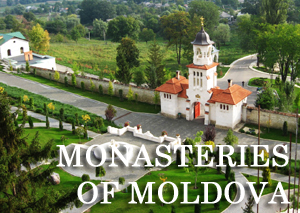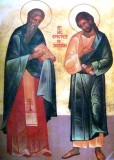
Saint Epictetus, priest, and Saint Astion, (improperly said) monk, originals from Asia Minor, were martyrs for Christ in the 3rd century in Scytia Minor (the today Romanian region Dobrogea, situated between Danube and the Black Sea). They were originary from Little Asia. Information about their lives is known only from a copy of a 15th century manuscript kept in the archive of the Savior Church in Utrecht, published in 1615 by the Jesuit monk Herbert Rosweyde, the initiator of the hagiographic collections Acta Sanctorum, under the title “SS. Epicteto presbytero et Astion monacho, martirybus Almiridiensibus in Scythia “.
The Martyrdom of Sts. Epictetus and Astion
Epictetus was a zealous believer born of Christian parents. Since his youth he left his home for an ascetical life, somewhere in the desert lands of Phrygia (Asia Minor), being later ordained as priest. From this position, he started to preach the Gospel among the pagans in the region, baptizing some of them and working healing wonders in the name of the Savior. Astion was one of his spiritual sons, who came from the family of a Roman senator named Julian. Following his Baptism, Astion started an ascetical life similar to one of a monk.
Around 290, the two came in the province of Scythia Minor, in order to preach the Gospel in this region situated at the borders of the empire. They arrived in a city named Halmyris, situated on a hill near the Danube Delta. Settling here, they started an ascetical life in the service of God. Further both of them made some wonders, especially exorcisms.
Epictet and Astion became quickly famous in the town. In one day, the commander of the Roman troops stationed there, named Latronianus, came in town with some administrative and military business and heard about them, as they would be wizards practicing a strange rite, and that through their speeches many citizens were converted to the new religion. So he commanded the imprisonment of the two until the sunset and forced them in various ways to deny their faith in Christ. At the time, Epictetus was about 60 years and and Astion was 35. Latronianus wanted to give his best to be observed by the emperor Diocletian, who haven’t started yet his persecution. During the torture, the saints didn’t abjure their faith, but they decided not to say a word about their families in the homeland, in order not to put them in danger. Anyway they confessed repeatedly that they are Christians, and that “this is their name, their ancestry and their homeland”.
The 3rd chapter of the martyrical act describes the last 35 days in the life of the two martyrs, from the arrest up to their execution. In the next day after their imprisonment, the two were brought in the middle of the court, but their faces were shining like the sun, so that Latronianus could barely look at them. During the hearing, the two saints confessed once more their faith in Jesus Christ, the “source” of their mysterious power and they denied any possible return to the old pagan faith. Latronianus of course got angry and ordered that the two saints to be bound, and their bodies to be peeled off with iron claws.
Among the judges was Vigilantius, a very sensible man. After four days of process, hearing the Saints incessantly repeating that they are Christians, he decided to become also himself a Christian. So, after the process session, he went in the prison to Epictetus and Astion, where he received from the saints the sign of the eternal live (probably that means he was baptized) and became disciple of the Lord.
On the fifth day of the process, Epictetus kept a longer speech which ended with the words “We are Christians”, which angered extremely Latronianus, who commanded that the wounds of the saints to be rubbed with salt and vinegar. After this, as if it was not enough pain, they were thrown into a cauldron of boiling pitch. However, through their faith Christ, the two saints remained unharmed, and after that they were thrown in the cell, having no food or drink for 30 days.
After passing the 30 days of starvation, the two saints were brought back to court, where they confessed Christ once more, saying that their miracles were no witchcraft, but power given by their Lord. “Hearing this, that crazy with a beast soul ordered his servants to crush with stones the faces of martyrs. He asked also to bring some ash rods and to hit them until giving their souls […] but because as many blows they endured, they received them always happy and fully hearted in confessing their Lord, then the servant of the devil, seeing that his madness cannot in any way overcome their constancy, he commanded the servants to take them out of the city and to cut their heads with the sword”.
The first beheaded was St. Astion. In that moment, Epictetus have thrown himself upon the body of his disciple and asked the executioners to kill him so. Their martyrdom happened on 8 July 290. The new converted Vigilantius, together with other Christians, managed to take the bodies of the two holy martyrs at the sunset and buried them with great honor. In the act of martyrdom of these Holy Martyrs there is a mention that the two beheaded bodies were white like the snow and through them some sick people were cured.
During the tortures of the two saints, a citizen from Astion’s hometown came in Halmyris and recognized the martyr. Returning home, he told everything to the parents of the martyr, who didn’t know anything about his fate before. His mother said that she wanted it immediately to become Christian and if necessary, to become a martyr like her son, and then both parents of Astion embarked on a ship and came to Halmyris to see their son. On the third day after the funeral, Vigilantius had a vision. Astion appeared to him, telling about the arrival of his parents in the city. So he welcomed them and told them about the martyrical death of their son, and after this, the both converted to Christianity and were baptized by the bishop Evangelicus of Tomis, who also suffered a martyrical death shortly after.
Saints Epictetus and Astion are the earliest martyrs in Romania today, about whom there is detailed written information.
The veneration of the Saints
The relics of the two saints remained unknown for a very long time, and they were discovered only in 2001, during some excavations made at the archaeological site of ancient Roman-Byzantine city Halmyris, located between Murighiol and Dunava, in Tulcea County. The archaeological site was opened in 1981, but only in 2000 a Romanian-American team discovered an Episcopal basilica, confirming a “Notitiae episcopatum” during the basileus Anastasios I (491-518) of Constantinople, who mentioned 14 bishoprics in Scythia Minor, and among them also Halmyris. The discovery of the crypt where the relics of the two martyrs laid happened on August 15, in the day of the Dormition of Our Lady.
The crypt had two chambers, the first being the funeral room where there were found the remains of two Christian martyrs, of a yellow-brown color. In the second room, probably plundered already in the Antique, there were found the white bones of some other persons, remained unknown. The different color of the bones confirms that they weren’t mixed in that period, and this fact may be a sign of their earlier veneration.
Together with the remains of two martyrs, there were found some fragmentary inscriptions on the chamber’s eastern wall. On the first two rows from the whole seven it have been decoded the Greek words “Martyrs of Christ”, and on the fifth, the word “Asto” finished with the Greek letter “v”, which Latin correspondent is “n”. In the seventh raw there were identified the first three letters of the verb “ibrio”, meaning “to molest, hit”. These indices led the archaeologist Michael Zahariade to believe that he found the relics of Epictetus and Astion, whose lives and sufferings are recounted in “Acta sanctorum”. The anthropological expertise have shown even the health situation of the two saints, and offered information about the last 35 days of their lives.
The first skeleton found was the one of Epictetus, from which it was missing only the first two cervical vertebrae (atlas and axis) and the skull, but having the mandible. The research confirmed the skeleton of a man of 64-67 years, suffering of from reactive arthritis, extensive ankylosis of the spine and osteoarthrosis. The mandible and the shoulder blades presented some fractures made directly on the bone, by hitting with blunt objects on the shoulder and face. Because there were no signs of bone regeneration, there is believed that he died shortly after.
From the skeleton of Astion it was missing also the skull, but the mandible was present. The age indicators have shown an age of 49 years, because of the form of the pubic symphysis, but the experts had reasons to believe an age at death of about 30-40 years. Probably he suffered an accident in his childhood and he presented a small hump. On his skeleton there were discovered some violence traces: the right humerus had a trace caused by a sharp object. Another trace was discovered on the left fibula that was completely fractured. Also the mandible was fractured as if after some very strong blows, and the lack of any signs of bone repair shows that the person died shortly after. Moreover, the first atlas vertebra proves that the death was caused by beheading. All these information confirm the describing from the Acta Sanctorum.
The holy relics of Sts. Epictetus and Astion were placed in two coffins in the cathedral church of the Archbishopric of Tomis, in Constanţa. Some small parts were offered by the current Archbishop Teodosie also to some other churches in Romania but not only.
Another martyr saints in Scythia Minor (Dobrogea)
St. Epictetus and Astion are not the only martyrs in Dobrogea during the reign of the last persecutors. Together with them, there are known also St. Emilianus, soldier in Durostorum, who died in the time of Julian (361-363) and celebrated on 18th July, and the Martyrs from Niculiţel, Sts. Zottikos, Attalos, Kamassis and Philippos, mentioned in a Syrian Martyrology on 4th June, whose relics were discovered in 1971. A crypt with relics of saints was found also in Adamclisi, but the identity of the martyrs is still unknown.
Besides these there are some other martyr groups: some from Tomis (now, Constanţa): Macrobius, Gordian, Elia and Valerian (September 13), Marcial, Victurus, Marina and Servulus (September 15), Priscus, Crescens, Evagrius, Denegothia, Faust, Marcial, Ianuarius, Alexander, Euprobus, Pigra, Dignus, Gottia, Sarurnus, Speus, Castus, Primus, Donatus, Passicus, Probus, Digna, Christus (October 1), Argeus, Narcis and Marcellin, three brothers and sons of a bishop of Tomis (January 2), Claudius, Eugenius, Rodon, Diogenes, Prima, bishop Filius, Theogenes, and Petrus (January 3), bishops Efremus of Tomis and Eterius (march 7), Chrestus, Pappus, Tomas, Evagrius, Benignus, Arestus, Rufus, Sinidia, Patricius (April 3), Marcian, Nicandrus, Apollonius (June 5), Paulus and Cyriacus (June 18).
From Axiopolis (Cernavodă) there are known the martyrs Cyril and Kindeas (March 9), Zenon, Dio, Acacius and Crispus (May 9), Irenaios and Heraclius(August 5). St. Cyril had a cult developed in Axiopolis. On his tomb there was built a basilica and later here it has beeb developed a large Christian cemetery. According to Procopius of Caesarea, in the 6h century, during the reign of Justinian, Axiopolis was renamed after Cyril. In 1947 there was discovered an inscription saying: “(to the Martyrs) Cyril, Tasios and Kindeas I bring praise”.
At Noviodunum (Isaccea) not far away from Niculitel, there are celebrated Sts. Amantus, Lucius, Alexander, Andrea, Donatus and Peregrinus (June 6) and another group, of Cirinus, Ebustus, Rusticus, Silvius.
The so many names here mentioned bring an idea about the development of the Christianity in this region, situated at the border of the Roman Empire, but also about the strength of the persecutions, especially during the reign of Diocletian and Licinius.
Troparion (Hymn) of the saints
Oh, faithful believers, come to praise Epictetus, the wise teacher and Astion, the very zealous disciple with the the same praise as Hermolaes and Panteleimon , as the martyrs of Christ and the praise of Dobrogea, saying to them: enjoy, you who always intercedes for our souls!
- Holy Martyrs Epictet and Astion
- The Cript where the holy relics were found
- The relics of the two saints put into their coffins
- Traces of a sword hit on a bone (humerus) of St. Astion
source: Theodialogia
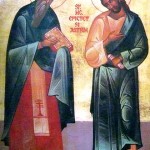
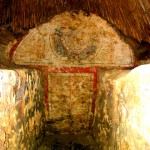
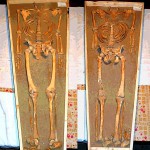
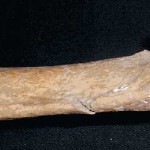
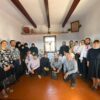 Memorial house of romanian elder Sofian Boghiu Consecrated in his native Village
Memorial house of romanian elder Sofian Boghiu Consecrated in his native Village 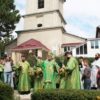 On the 14th Sunday after Pentecost, His Eminence Metropolitan Vladimir celebrated the Divine Liturgy in the St. Nicolas Monastery, Dobrusa village, Soldanesti region
On the 14th Sunday after Pentecost, His Eminence Metropolitan Vladimir celebrated the Divine Liturgy in the St. Nicolas Monastery, Dobrusa village, Soldanesti region 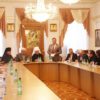 Inauguration of the volume of articles presented at the National Scientific Conference “The Orthodox Church and the State: Faith and Knowledge”
Inauguration of the volume of articles presented at the National Scientific Conference “The Orthodox Church and the State: Faith and Knowledge” 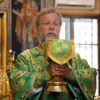 The 12th Sunday after Pentecost – kindness in God changes the world we live in
The 12th Sunday after Pentecost – kindness in God changes the world we live in 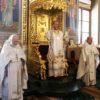 The 11th Sunday after Pentecost – loving our God and our neighbor
The 11th Sunday after Pentecost – loving our God and our neighbor 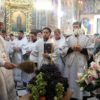 The Transfiguration of the Lord, celebrated in the Nativity of the Lord Cathedral in Chisinau
The Transfiguration of the Lord, celebrated in the Nativity of the Lord Cathedral in Chisinau 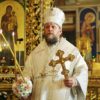 His Eminence Metropolitan Vladimir celebrates 65th anniversary
His Eminence Metropolitan Vladimir celebrates 65th anniversary  Divine Service at the St. Theodore of Tyre Monastery (Ciuflea) in Chisinau, and congratulation of Archimandrite Nicolae (Rosca), the Monastery’s confessor-administrator, on the 50th anniversary.
Divine Service at the St. Theodore of Tyre Monastery (Ciuflea) in Chisinau, and congratulation of Archimandrite Nicolae (Rosca), the Monastery’s confessor-administrator, on the 50th anniversary.  The Tenth Sunday after Pentecost: Divine Liturgy in the Nativity of the Lord Cathedral in Chisinau
The Tenth Sunday after Pentecost: Divine Liturgy in the Nativity of the Lord Cathedral in Chisinau 